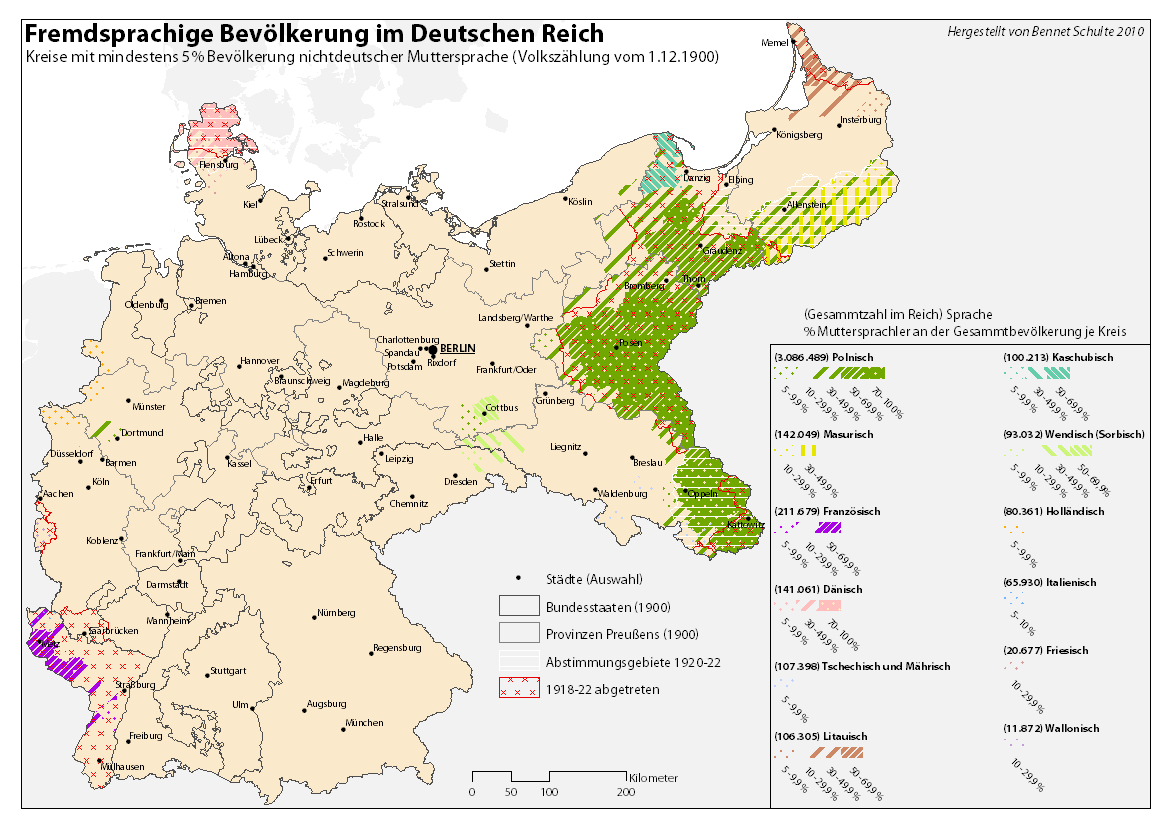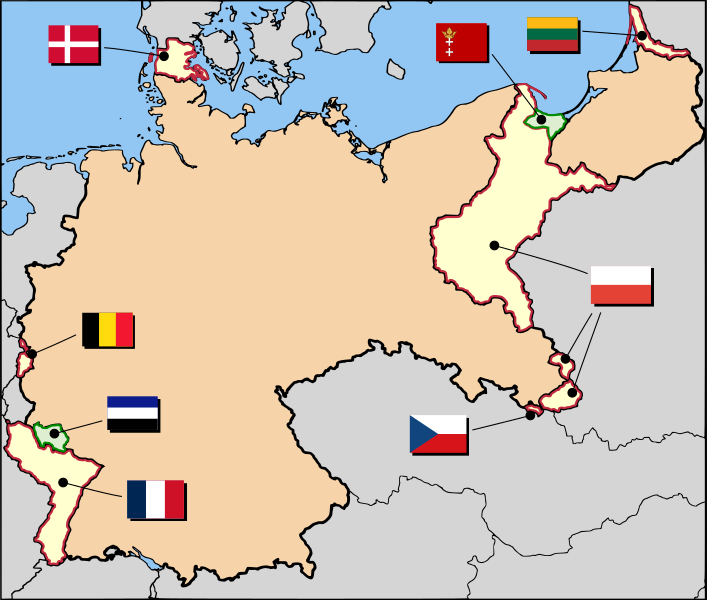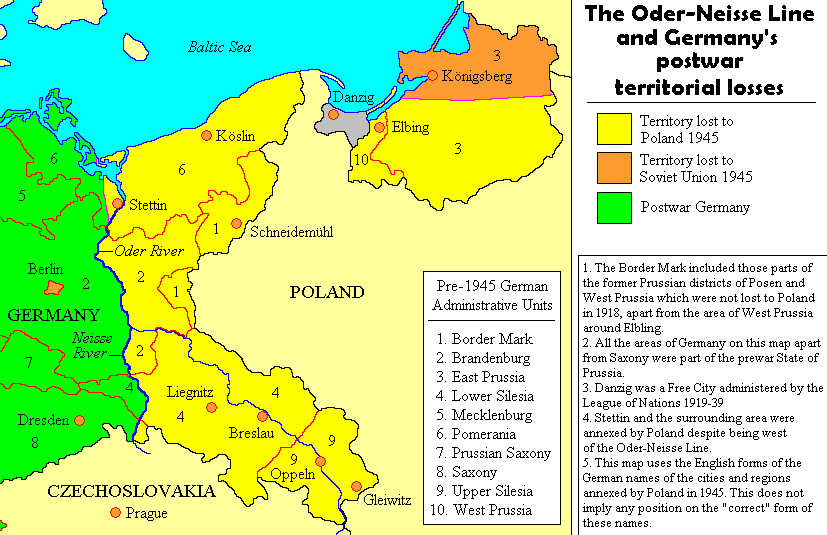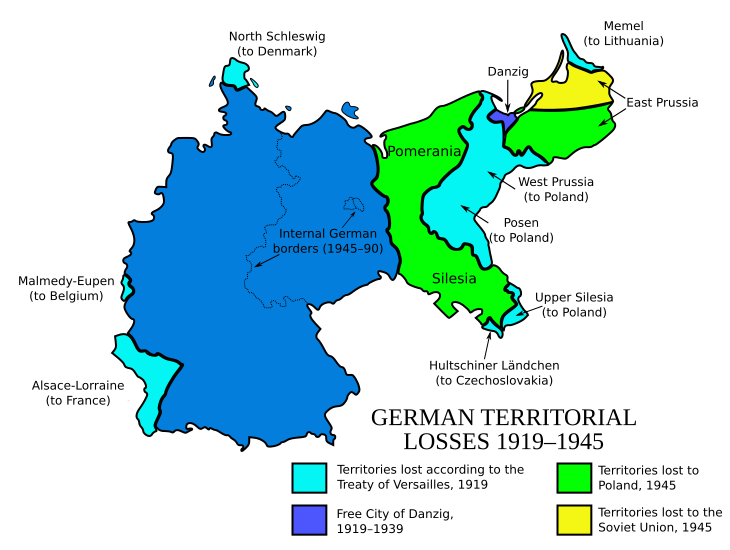Superstulatek
- Nie jesteś zalogowany.
- Polecamy: Hobby i zwierzęta
Strony: 1
- Index
- » Polscy stulatkowie
- » Krótka Historia Niemiec - Wyodrębnienie polskich i niemieckich ss
#1 2013-08-11 21:47:19
 Waenzeslaus
WaenzeslausStulatek

47793472
- Zarejestrowany: 2013-04-21
- Posty: 3796
Krótka Historia Niemiec - Wyodrębnienie polskich i niemieckich ss
I consider as Polish sc only supercentenarians of Polish origin.
Or Jewish-Polish like Dr Pogonowska.
The truth is that
Mrs Holtz and Mrs Jantke are of German origin
They were born in Germany, spoke German and simply felt German.
Their only connection with Poland is the fact, that after the war, borders have changes and their place of birth was now in Poland.
Automaticly they emigrated to the west, to their fatherland, Germany.
Mrs Rosa Rein on the other hand is a Swiss supercentenarian.
Let me explain the situation:
There are no other two such countries in Europe, which borders would change so drasticly in XXth century. Apart from the countries that didn't existed earlier like Ukraine or Belarus.
Before the end of the First World War, Germany was the Kaiserreich Deutchland (the II Reich) In this country today's German supercentenarians were born. It was a magnificent power. Undisputably the strongest power in Europe, large country in the Centre of Europe, not only strong militarity but also playing first role in world's science and inventions along with the USA and the UK.
The borders of this country contained all today's Germany and half of today's Poland: Schlesien, Pommern, Greater Poland with Poznań and Ostprüßssien, Schleswig (today Danish), Alsace (today French) some villages of today Belgium and Memel (today Kłajpeda, the biggest sea port of Lithuania.
It possessed also a few oversee colonies, however was far behind the British or French Colonial Empires at those times.
Four German colonies were in Africa: Tanzany, Namibia, Kamerun and Togo
On Oceania: Bismarck Archipelago
But that country wasn't home for just one nation. There were a few bog minorities. The Polish minority being the biggest of them. Poles were living in Schlesien, Pommern, Greater Poland with Poznań and Ostprüßssien.
In my opinion, it was the strongest and best organised country German people have ever created. It was able to run a war on two fronts for 4 years.
But none country in Europe is able to rule it all.
After the First World War, which was lost by Germany and by Austria-Hungary and eneded with a collapsion of both of them. Germany, however, managed to keep West Schlesien, West Pommern and Ostprüßssien so the land where was German majority at those times, while the collapse of Austria-Hungary was a total dezintegration of that country.
The lands lost by the Germany after WWI
-- Alsace-Lorraine, the territories, actually annexed by France in 1681, which were returned to Germany in accordance with the Preliminaries of Peace signed at Versailles on February 26, 1871, and the Treaty of Frankfurt of May 10, 1871, were restored to French sovereignty without a plebiscite as a precondition to armistice (i.e. and therefore not as a clause of the Treaty of Versailles) with effect from the date of the armistice (November 11, 1918). (area 14,522 km², 1,815,000 inhabitants (1905)),
-- Northern Schleswig including the German-dominated towns of Tondern (Tønder), Apenrade (Aabenraa), Sonderburg (Sønderborg), Hadersleben (Haderslev) and Lügumkloster (Løgumkloster) in Schleswig-Holstein, after the Schleswig Plebiscite, to Denmark (area 3,984 km², 163,600 inhabitants (1920)).
-- The Prussian provinces Posen and West Prussia, which Prussia had annexed in Partitions of Poland (1772–1795), were returned to reborn Poland. Most of this territory had already been liberated by local Polish population during the Greater Poland Uprising of 1918-1919 (area 53,800 km², 4,224,000 inhabitants (1931), including 510 km² and 26,000 inhabitants from Upper Silesia). A remainder of both provinces staying with Germany became the new Prussian province of Grenzmark Posen-West Prussia.
-- Most of West Prussia, which Prussia had annexed during the first Partition of Poland (1772), was returned to reborn Poland in 1920 in order to provide it with free access to the sea "Polish corridor", despite having a sizeable German minority.
-- The Hlučín Region (Hlučínsko around Hulczyn) of Upper Silesia to Czechoslovakia (area 316 or 333 km², 49,000 inhabitants).
-- East Upper Silesia, to Poland (area 3,214 km², 965,000 inhabitants), even though during the Upper Silesia plebiscite 60% had voted in favour of remaining inside Germany.
-- The area of Eupen-Malmedy to Belgium, along with the Vennbahn railroad trackbed (which created six German enclaves within Belgian territory).
-- The northern part of East Prussia as Memelland under control of France, Italy, Japan and the United Kingdom, later transferred to Lithuania without a plebiscite.
-- The area of Soldau in East Prussia (a railway station on the Warsaw-Danzig route) to Poland (area 492 km²).
From the eastern part of West Prussia and the southern part of East Prussia -- Warmia and Masuria, a small area to Poland (see East Prussian plebiscite); despite nationalistic claim that ethnicity should determine national identity, a majority of the Slavonic Masurians voted for Germany.
-- The Saar area to be under the control of the League of Nations for 15 years, after that a plebiscite between France and Germany, to decide to which country it would belong. During this time the coal went to France as war reparations.
-- The port of Danzig (now Gdańsk, Poland) with the delta of Vistula river at the Baltic Sea was made the Free City of Danzig (Freie Stadt Danzig) under the League of Nations. (area 1,893 km², 408,000 inhabitants (1929)), 90% Germans.
source: http://en.wikipedia.org/wiki/Territorial_e...tion_of_Germany
During the Second World War Germany made its rule over large part of Europe.
No country before ruled such part Europe before in history.
After the Seconf World War, which was provoked by Germany itself, the looses were even greater:
- Lubuskie voivodeship (Lebus)
- Dolnośląskie voivodeship (West Schlesien)
- Zachodniopomorskie voivodeship (West Pommern)
- Warmińskomazurskie voivodeship (south of Ostprüßssien)
And the Mainland Germany was parted into two for 44 years. (1945-1989)

My great grandparents were born in II German Reich and I myself was born in a city that belonged to the II German Reich.
As you can see most of German looses were on east and became part of Poland. Some of the German supercentenarians were born there.
So I have no right of attributing those cases as Polish supercentenarians.
The same goes for Polish supercentenarians born in Estonia, Latvia, Lithuania, Belarus and Ukraine.
Thanks for reading
Wenzeslaus
Kontakt: superstulatek110@interia.pl
Offline
Strony: 1
- Index
- » Polscy stulatkowie
- » Krótka Historia Niemiec - Wyodrębnienie polskich i niemieckich ss

